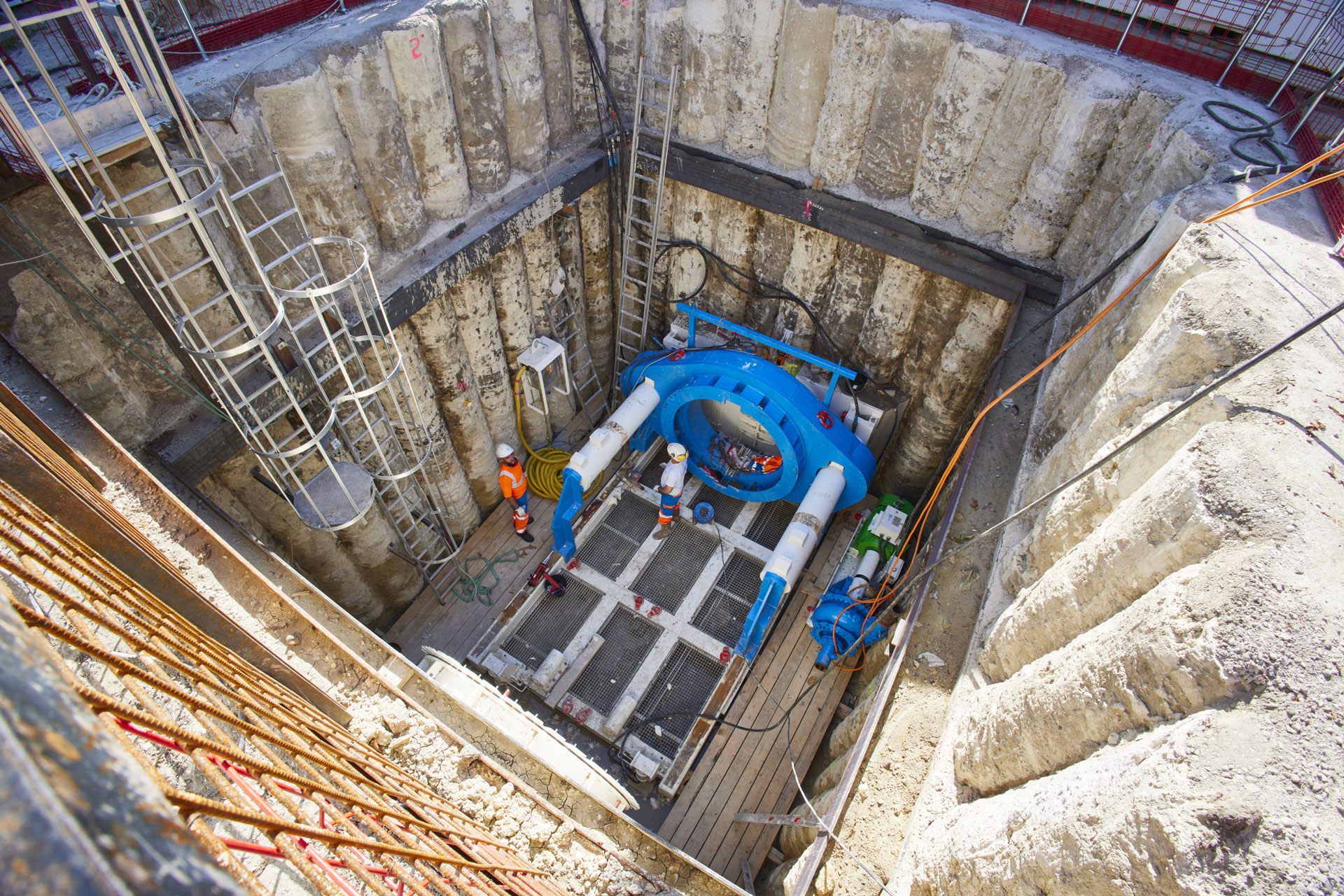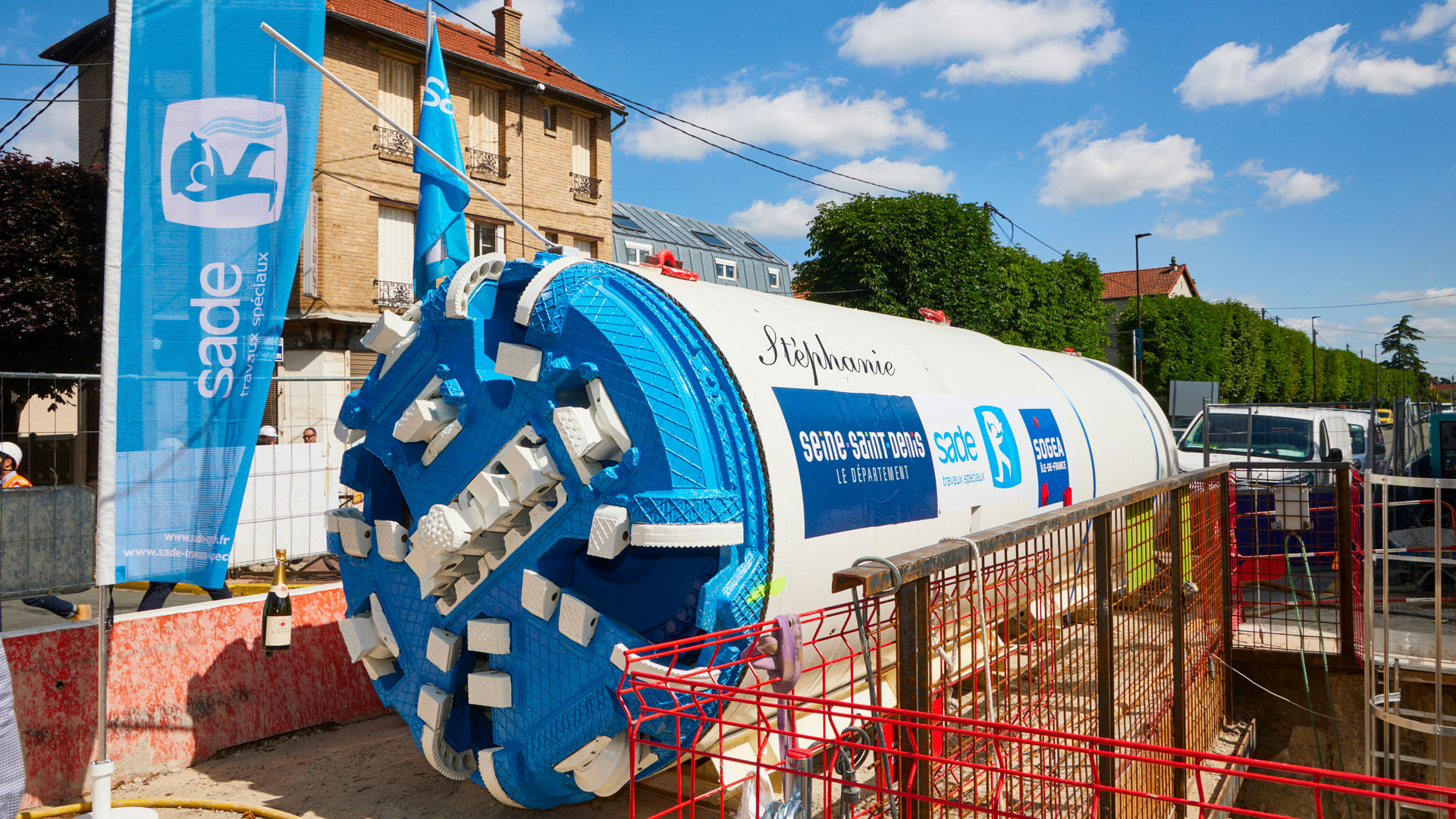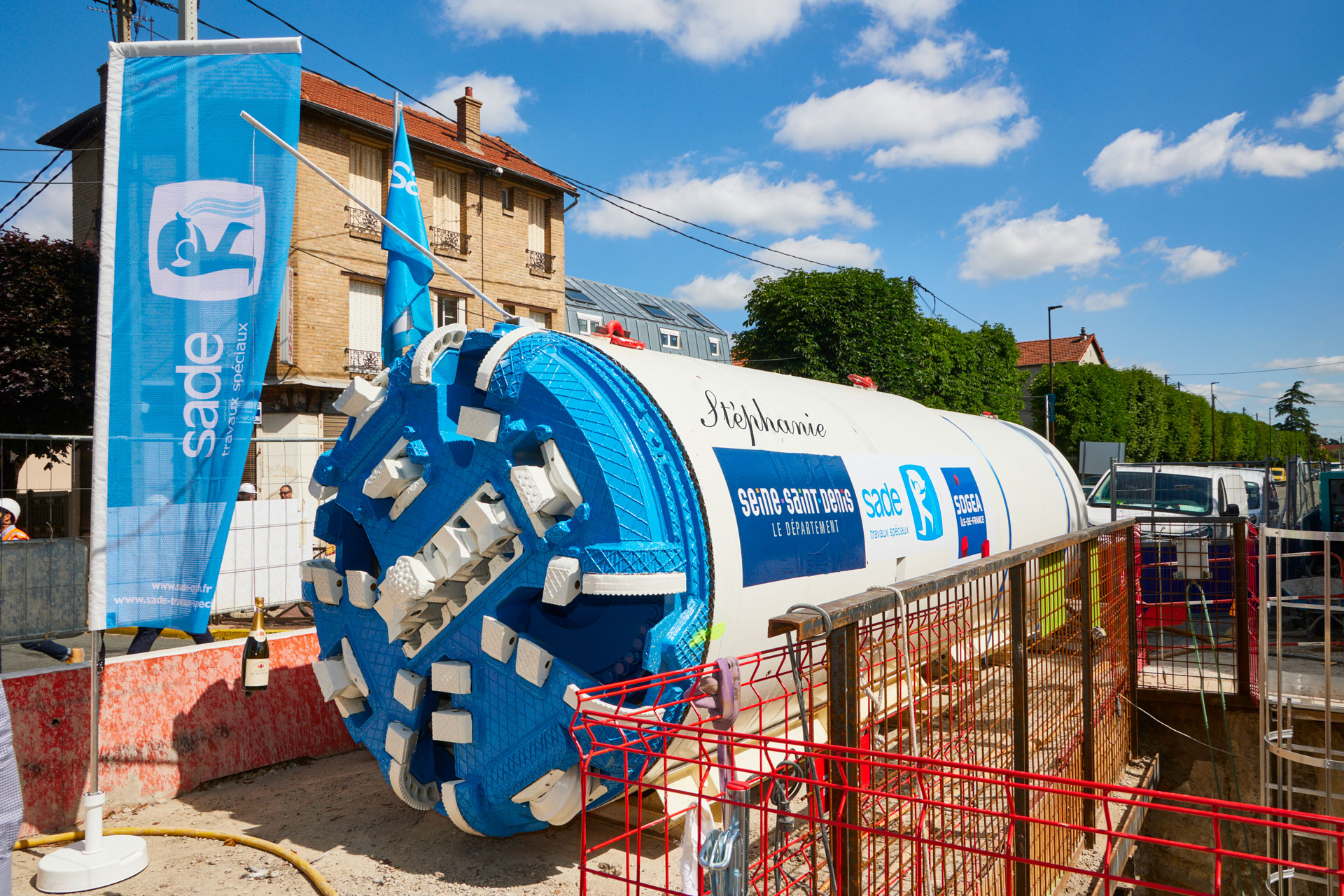An underground basin in Rouailler, the 4th and final step of a long-term project
The adventure of the Rouailler basin began in 2011, in the Livry-Gargan municipality of Seine-Saint-Denis, on behalf of the Departmental Council, with the Water Department acting as project contractor.

This new basin will replace the existing facilities, which are no longer adequate given the municipality’s urban growth, and augments the municipality’s service network, notably to include surplus stormwater drainage. On a broader scale, this project forms part of the overall rehabilitation of the department to enhance the sanitary quality of local waterways, by ending the discharge of departmental sewage waste into the Ourcq Canal. In its role as a filter for drained water, it will contribute significantly to the improving the quality of the River Seine, in anticipation of the open-water events of the 2024 Olympic Games.
The 1st and 2nd phases were devoted to the building of this underground facility: 55m in diameter for a storage capacity of 26,000m³.
The 3rd phase, executed by SADE Special Works between 2016 and 2018, focused on the building of 2000mm-diameter collector and several water intake facilities. This 620m collector was built using microtunnelling in 3 thrusts, including a tight bend thrust of 110m in radius, underneath railway lines. This 110m bend radius was a first for this distance in Europe!
The 4th and final phase of the project, known as the Quesnay network, links the two existing collectors: the 190/110 collector located just under the surface of Boulevard Jean Moulin, and the 230/130 collector located at a greater depth under Avenue Marcel Sembat. There is thus a dual aim to this network, i.e.
- To complete the Rouaillier project in its entirety
- Put an end to the annual flooding of the Quesnay district, due to the weak hydraulic capacity and shallow depth of the Jean Moulin collector
The works were entrusted to a consortium of two companies, SADE Special Works (agent) and SOGEA Ile-de-France (co-contractor), in association with 3 sub-contractors (NGE, Valentin and SEMERU).
Works consist in the building of:
- A water intake facility at the intersection of Boulevard Jean Moulin and Avenue Quesnay, to recover the effluents of the existing collector
- A 240m-long sewer mains (1,800mm-diameter), executed by an AVN1800 microtunnel boring machine, in a single bent thrust with a 700m radius
- A gallery built using the standard process which will link the exit shaft of the microtunnel boring machine and the existing collector under Avenue Marcel Sembat, and will ensure the continuity of effluent flow between the existing and new collectors
- Two displaced manholes, executed via the standard method
The very dense urban environment and the multitude of existing underground networks led the project contractor to opt for a trenchless solution. The microtunnel boring machine reduced the surface area of works, limiting it to two shafts in secant piling, and minimised the impact to local residents on Avenue Quesnay. To reduce noise levels from the shafts, SADE Special Works used a super-soundproofed generator and fitted acoustic membranes to the borehole sludge treatment facilities (grit and silt traps).
The second challenge for the microtunnel boring machine, named Stéphanie after its ‘godmother’, was the clay-rich soil of the site. SADE Special Works, in association with Herrenknecht, thus fitted an adapted cutting wheel, free of knurls apart from the overcut, and equipped with swinging blades. A central point improved the boring of the clay soil. This geology also required a spinner among the treatment facilities to limit the presence of fine particles in the sludge fluid and reduce the number of dredging operations.
‘Stéphanie’ set to work in late June and successfully completed her task in early August, leaving the civil engineering teams to take over for the creation of the water intake facility.




